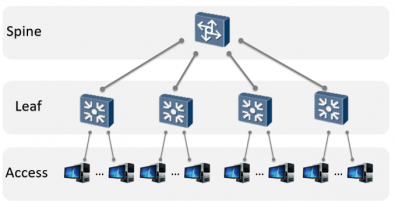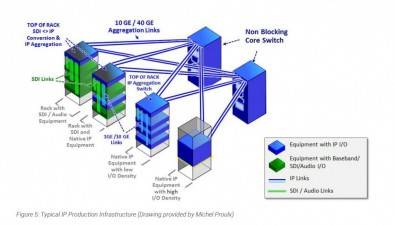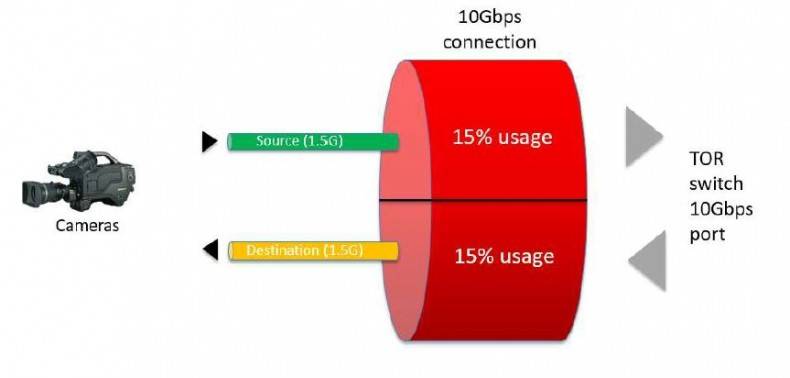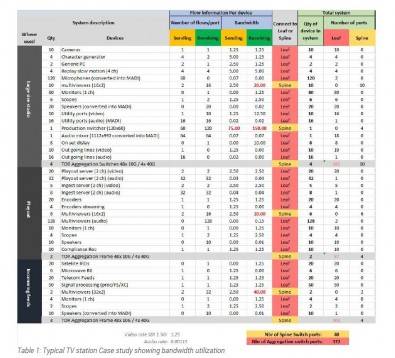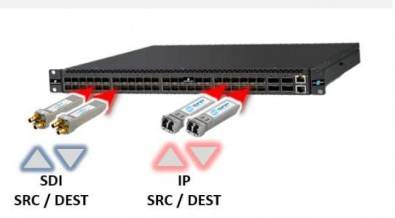UNDERSTANDING IP-CENTRIC SOLUTIONS � DESIGN, INFRASTRUCTURE AND COST
10th Feb 2018
To fully leverage the benefits of implementing IP-Centric solutions, a fast-growing sector for production and broadcasting, there are considerations to make at an infrastructural level, making in-depth understanding from engineering management a critical part of the process.
In an excellent article, first published last year, we realise that failure to understand IP-Centric solutions at the design stage, can result in much higher implementation costs for the entire infrastructure. Considering the challenges of IP infrastructure from the outset, can result in a successful implementation and the ability to access the natural expendability that has been one of the core reasons for migration to IP technology for both small and larger-scale applications across a broad range of market sectors.
Facing the challenges of IP-centric solutions
There are three main challenges to face when considering the migration to IP-Centric solutions, and if successful implementation is to happen, these must be address and taken into the planning process to enable access to the proven, cost-effective and scalable technology available.
Scalability and cost
Future-proofing is a big deal in the industry, which is perpetually expanding and changing, regardless of sector. Infrastructural design must realise both short-term and future expansion, without compromising the system in terms of rebuilding requirements at some point down the line, which would incur additional costs.
This also includes the challenge for adaptation of current designs to realise the initial cost investments as quickly as possible to cover the costs of future equipment requirements.
Protecting signals
In the world of TV stations, system redundancy is a major factor, and systems must remain resistant to signal failure during operational, often 24/7, times. Signal interruption can lead to significant loss of revenue and reputation.
SDI signals are more robust than IP signals, so protection of the signals must be considered mandatory. This also includes continuous operations during equipment maintenance, repairs, upgrades and other both critical and routine tasks.
Bandwidth usage costs
It is well-known that there are cost repercussions associated with bandwidth usage on IP infrastructures. The difference between broadcast TV and file transfer data, for example, is staggering. This means that signal transportation via IP switches can increase in cost comparable to bandwidth usage, which leads us to the conclusion that excessive, or subsequent ‘wastage’ of ports use can significantly impact the cost of the entire system.
Meeting the challenges with Spine/Leaf architecture
So, what can be done about it? Getting the right system architecture in place can make all the difference. Spine/Leaf architecture was first introduced to provide a data centre environment with a fast, reliable and efficient, scalable and predictable solution for all broadcast communications.
Spine/Leaf architecture allows all connections to remain stable and away from network loops, while being simultaneously used via configuration to Equal-Cost Multipathing (ECMP). Scalability comes with the addition of Leaf and Spine switches to the network.
How does this work?
Spine/Leaf architecture comprises two-layer data centre network topology:
- Leaf switches typically have servers and storage connections to them, connecting devices that provide and require data accessibility.
- Leaf switches commonly use lower bandwidth ports, such as 1GE, 10 GE and 25GE, in addition to some higher bandwidth ports (40GE and 100GE).
- Leaf switches connect to the Spine switch, which has further higher bandwidth ports and forms the deliverability layer for servers via the network connection points.
Within a standard data centre application, islands are used to receive and handle data traffic. These islands can help to minimise the data needing to connect to other islands. Data rates can differ significantly according to the usage requirements of the client, often calculated on a daily basis.
An example of usage calculability vs cost can be seen below:
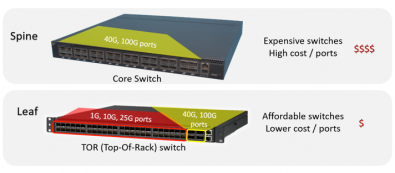
A Spine 32x 40G port switch should be capable of handling a switching capacity of 1,28 Tbps. Leaf switching are typically configured to a ratio of 3:1 to reduce hardware costs.
This means that the cost of the port directly correlates to the internal capacity or capability of the switch to route every signal at the line rate, which translates into an equal internal bandwidth to the number of ports multiplied by the individual bandwidth.
As not all clients are likely to be utilising their bandwidth simultaneously, systems can be designed accordingly, but will generally ensure that the total bandwidth for all the switch ports will not be higher than the total available aggregate bandwidth. During peak demand, this is managed by acceptable levels of user impact via retries, and can lead to switch cost reductions without operational compromise.
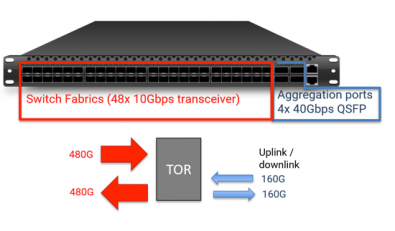
This is successfully demonstrated in the image, which illustrates how 48 x 10GE ports switch delivers four 40GE QSFP links with a sum total of 160Gbps of bandwidth. This shows that only a third of the potential bandwidth from the I/O ports with 480 Gbps, which is a good example of how costs can be reduced with non-specialist equipment. There are limitations, of course, and better ratios can be gained by higher investment, and uncompressed type flows with larger levels of data should consider additional network requirements.
The Spine/Leaf equipment set-up is shown below, and demonstrates how the strategic balance can significantly reduce fibre optic cable distances within the IP network. This can be particularly beneficial to systems within large facilities, such as TV stations with centralised equipment rooms, as the distances and cable quantities are reduced due to local connectivity to devices. This can also give greater connectivity to SDI devices, using grouping methods to connect to gateway devices.
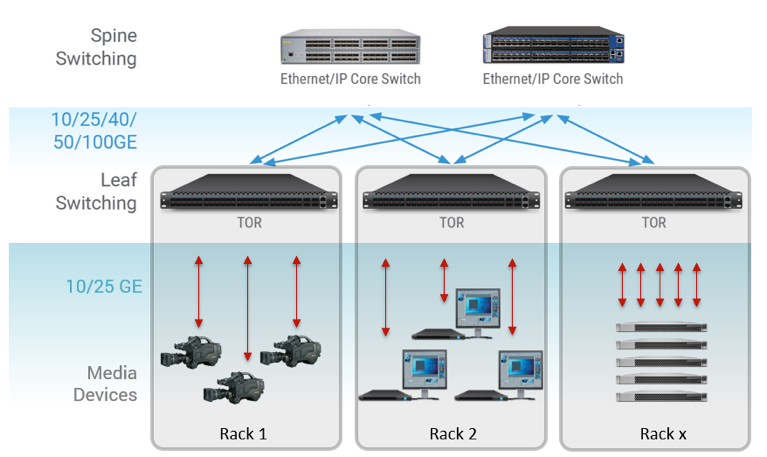
Input and Output balancing
Typically, broadcasting production plans include few inputs and outputs for equipment, creating an uneven I/O balance. Configurations can vary, of course, but generally will not use the full 10G bandwidth.
The image highlights the typical IP production infrastructure, showing equipment, IP links and SDI/audio links within the system.
It is clear to see that sources like cameras and servers that are working with I/O through a 10GE port, using 1.5G video are accessing 15% of the port’s capacity.
Here we see that the port can be better utilised with other equipment receiving more but sending fewer signals via the 10GE port.
Cost comparison
Using average industry pricing, Spine switching costs seven times more per port than TOR switches. This means that cost savings can be made by careful design to use aggregator switching for some types of device, and direct, Spine connections for others.
For an example, based on a case study of an average TV station demonstrating bandwidth use, see the table below.
Another way that SDI can be integrated into a current IP-centric infrastructure is via the use of Small Form-factor Pluggable adapters (SFPs). These can be installed within the TOR switches to enhance conversion of SDI to IP, and IP to SDI.
According to industry experts, the design and implementation of systems using SFPs can cut the number of fibre optic cabling by 50%.
In addition, SFPs make the transition to IP simpler with the replacement of the SFP inside the switch as the devices become ready. This saves on major rebuilding, and investment.
Some types of SFP will deliver the capacity to convert dual signals at each 10GE port, yet still can not lead to a full utilisation of the available bandwidth.
See the table below to compare three real scenarios that describe I/O port usage.
Ensuring design formalities
It is now clear that design plays the critical role. We can see that optimisation of bandwidth usage, via Spine/Leaf architecture is going to deliver the efficiency needed to interconnect devices into the IP network.
Use of bandwidth within the switches optimally, will deliver the cost savings required, and the use of TOR switches will simplify and reduce cabling. Furthermore, integration of SFPs within TOR switches can lead to more cost efficiencies.
It has been proven that Spine/Leaf architecture has all the qualities needed to deliver the answers to the implementation challenges that system designers and managers are facing – scalability, cost efficiency and signal protection.

